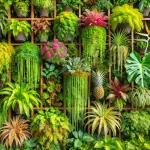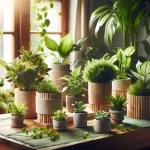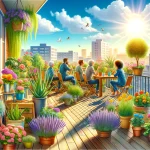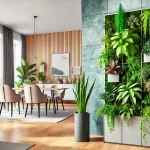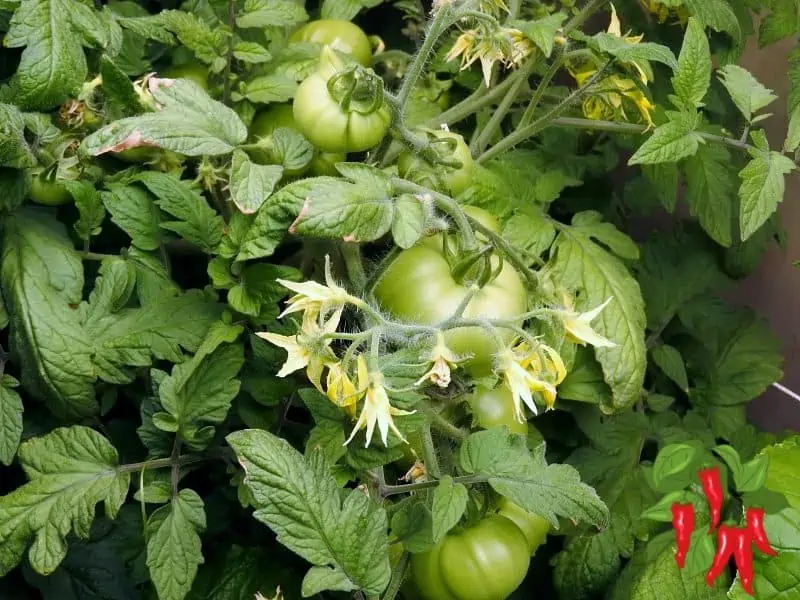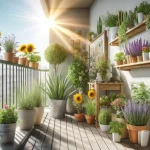This post may contain affiliate links. If you buy something from one of our links we may earn a commission. Thanks
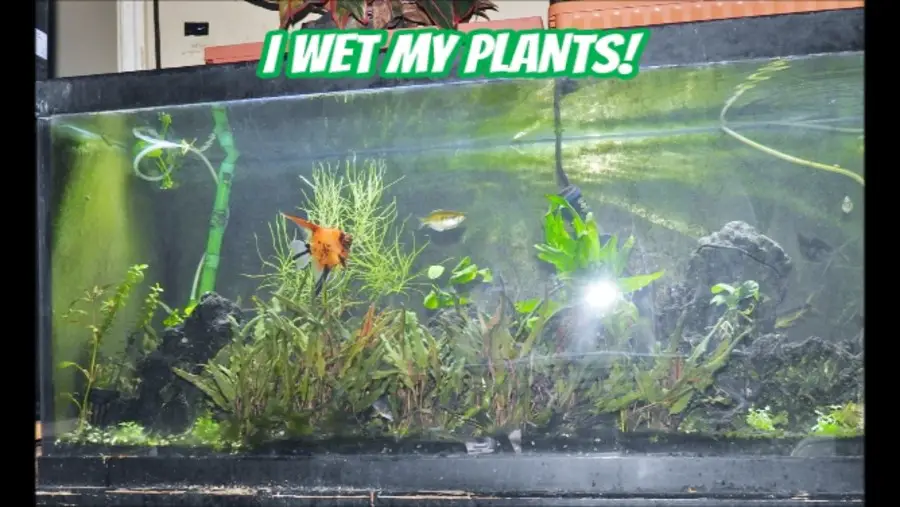
You don’t need to live near a jungle to grow one. With a 75 gallon planted tank, you can create your own lush underwater world right in your living room.
If you’re looking for a low-stress, high-reward way to enjoy plants and fish together, this setup might just become your new favorite hobby.
75 Gallon Planted Tank Key Takeaways
- 75 Gallon Planted Tank setups are perfect for combining aquatic plants and fish in a balanced ecosystem.
- They offer ample space for plant growth, easy aquascaping, and stable water conditions.
- With the right lighting, substrate, and care, this tank size creates a thriving underwater jungle that’s both beautiful and functional.
Why I Wet My Plants (And You Should Too)
Yep, I wet my plants—on purpose! I’m not talking about overwatering houseplants, either.
I’m talking about a 75-gallon underwater jungle where I grow lush aquarium plants right alongside my fish.
If you’ve never grown plants in water, you’re seriously missing out. It’s fun, it’s low-maintenance, and you don’t need a lot of space or money to get started. A simple tank, a few plants, and boom, you’re hooked.
Aquarium gardening opens up a whole new world. And when you add fish into the mix, you’re not just growing plants, you’re building a living, breathing ecosystem in glass.
You control the plants, the animals, the environment… heck, even the weather (well, temperature and water quality).
It’s gardening on god mode—and once you dive in, you’ll wonder why you didn’t start sooner.

Aquascaping
Aquascaping is the craft of arranging aquatic plants, as well as rocks, stones, cavework, or driftwood, in an aesthetically pleasing manner within an aquarium—in effect, gardening under water.
Aquascape designs include a number of distinct styles, including the garden-like Dutch style and the Japanese-inspired nature style. Typically, an aquascape houses fish as well as plants. https://en.wikipedia.org/wiki/Aquascaping
🐟 75 Gallon Planted Tank: Awe-Inspiring Setup Guide for Low-Tech Aquascaping

✅ Introduction: A Wet and Wild Gardening Adventure
You’ve heard of houseplants—but what about underwater ones? A 75 gallon planted tank opens the door to a whole new type of gardening.
A standard 75-gallon tank is typically 48 inches in length, 18 inches in width, and 21 inches in height (48″ x 18″ x 21″)
If you’re into growing things but want less mess and more fish, this setup is calling your name. It’s fun, relaxing, and surprisingly easy to start.
🌿 Tank Background: From Saltwater to Jungle
This tank didn’t start out planted. Originally, it was a saltwater reef packed with corals and saltwater fish.
But reef tanks are high-maintenance, and plants don’t mix well with coral. I wanted to grow things, not just test the water every day.
So I made the switch. Now it’s a freshwater jungle, and it’s been running strong for years.
- Originally a saltwater coral reef setup
- Coral tank required ultra-clean water (bad for plants)
- Switched to freshwater to grow aquatic plants
- Running as a planted tank for several years now
🌱 Substrate & Hardscape Setup
Every planted tank starts from the ground up, literally. What you use under your plants makes a big difference in how well they grow.
This setup keeps it simple but effective, using materials that help plants thrive and keep water stable without needing fancy tech.
- Substrate: Eco-Complete planted tank substrate
- Comes pre-wet with beneficial bacteria
- No rinsing required—just pour and plant
- Helps kickstart the nitrogen cycle
 CaribSea Eco-Complete 20-Pound Planted Aquarium, Black
CaribSea Eco-Complete 20-Pound Planted Aquarium, Black
- Hardscape: Rocks recycled from a former coral tank
- Rinsed and repurposed for freshwater
- Provide hiding spots and natural structure
- Surfaces support healthy bacterial colonies
- Layout Tip: Rocks placed behind plants to conceal filters and add depth
💡 Lighting, Filtration & Equipment
You don’t need a high-tech setup to grow healthy plants. This tank runs on simple gear that gets the job done.
It keeps the water moving, the plants growing, and the fish happy, all without overcomplicating things.
- Lighting:
- Finnex Stingray LED light
- Gentle spectrum that supports low-tech plant growth
- Not as intense as reef lighting, but perfect for this setup

Finnex Stingray Aquarium Led Light 2.0, Plant Growing 660nm Red LEDs, 12 Inch
- Filtration:
- Dual sponge filters for biological filtration and low current
- Added a Penn Plax Cascade 600 for extra water flow and particle cleanup, and removed one sponge filter.
- Spray bar helps circulate debris toward filters
- Uses sponge and activated carbon media
 Penn-Plax Cascade 600 Fully Submersible Internal Filter – Provides Physical, Biological, and Chemical Filtration for Aquariums and Turtle Tanks
Penn-Plax Cascade 600 Fully Submersible Internal Filter – Provides Physical, Biological, and Chemical Filtration for Aquariums and Turtle Tanks
- Heater:
- Essential for keeping tropical plants and fish warm
- Helps maintain stable temps in cooler climates or during winter
🚫 No Leaks Allowed: Why I Use Internal Filters
Living on the second floor means I can’t risk even the tiniest leak. A drip could become a disaster.
I have had problems with Hang-On-Back and other external filtration systems in the past.
That’s why I stick with internal sponge filters and compact power filters like the Cascade 600.
They stay inside the tank, so there’s no plumbing to fail—and no water on the floor.
🌾 Plants Growing in the Tank
This tank is packed with variety, with some labeled plants and some mystery plants, but all doing their part to build an underwater jungle.
You don’t need fancy names to enjoy the process. Some were cuttings, some store-bought, and a few just showed up in the mix.
- Carpet Plants:
- Staurogyne Repens
- Slowly spreading to cover open areas
- Stem Plants:
- Bacopa
- Possibly Ammania (unlabeled, but growing strong)
- Cryptocoryne (Crypts):
- Several types, some with red tones
- Thrive even in low-tech, low-light setups
- Floating & Mid-Plants:
- Anacharis (fast grower, behind bubble wall)
- Pogostemon ‘Octopus’ (cut back, grows fast)
- Feature Plants:
- Red Tiger Lotus
- Sword Plant (benefits from root tabs)
- African Onion Plant (Crinum calamistratum)
- Rhizome Plants:
- Anubias barteri
- Java Fern
- Both were tied to rocks or driftwood
- Low maintenance, great for beginners
🐠 Fish & Inhabitants
Plants are only half the fun. This tank also has a diverse fish crew, with plenty of personality and color. Plants might set the stage, but the fish bring the drama.
From bold personalities to subtle beauty, each one plays a role in the tank’s vibe. Some are flashy, others shy, but together, they keep things lively.
- Boesemani Rainbowfish
- Blue in the front, orange in the back (once they color up)
- Peaceful, active swimmers
- Females are silver and often carry eggs
- Dwarf Gouramis
- Males are colorful; females are brown and chill
- Recently added and doing well
- Koi Angelfish
- Thinks he’s the boss of the tank
- Will chase others just to remind them he’s there
- Synodontis Catfish
- Wild swimmers—twists, loops, and turns
- Nocturnal and bulletproof
- Love to hide in the plants during the day
- Siamese Algae Eaters
- Rest on the substrate when not swimming
- Active cleaners without a swim bladder, so when they stop moving, they sink down.
- Corydoras Catfish (Cory)
- Shy, bottom-dwellers that like to dig
- Sometimes camera shy, but great tankmates
- Snails
- Help clean glass and surfaces
- Part of the self-sustaining ecosystem
🛠️ Maintenance & Tips for Success
You don’t need to spend hours on tank upkeep. This setup basically runs itself with just a little help here and there.
The plants do most of the heavy lifting when it comes to keeping the water clean, and a few smart choices up front make life easier long-term.
- Water Changes:
- First full change in 2 years—no joke
- Plant load keeps water quality stable
- Algae Control:
- Occasional glass scraping
- Leave some for the snails to snack on
- No CO₂ Needed:
- Low-tech plants grow just fine without it
- Fewer moving parts = fewer problems
- Fertilizer Tips:
- Minimal use, mostly root tabs for sword plants
- Let the substrate and fish waste do the rest
- Circulation & Cleanup:
- Added Cascade filter boosts flow
- Helps move debris toward sponge filters
- Occasional siphon cleanup in dead zones
- Top up the water to replace evaporation
🧪 Nitrogen Cycle: Why It Matters for Fish
If you’re adding fish to a new tank, don’t skip this step. The nitrogen cycle is what keeps your water safe and your fish alive.
It takes time to build up good bacteria, but once it’s stable, your tank becomes way easier to manage.
- Step 1: Fish waste and food break down into ammonia (toxic)
- Step 2: Beneficial bacteria convert ammonia into nitrite (also toxic)
- Step 3: Another type of bacteria turns nitrite into nitrate (less harmful)
- Plants Help: They absorb excess nitrate, improving water quality
- New Tank Syndrome: Happens when fish are added before bacteria are established ☠️
- Pro Tip: Always cycle your tank before adding fish
📌 You can add plants immediately to a new tank, but not fish. The plants can help your tank cycle, though.
🎯 Beginner Advice: How To Start Your Own Planted Tank
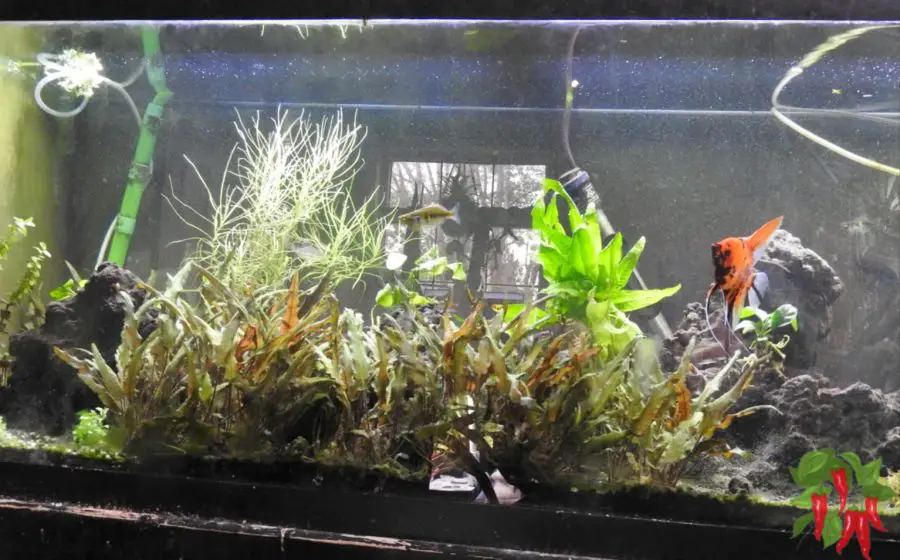
Starting a planted tank doesn’t have to be complicated or expensive. You can build a mini version of this setup without breaking the bank.
If you’re just getting started, here’s the easy way to dive in without drowning in gear or guesswork.
- Start Small:
- A 10-gallon tank kit costs around $100
- Comes with light, filter, and often a heater
- Pick the Right Substrate:
- Go with something like Eco-Complete
- No rinsing, plant-ready, full of bacteria
- Choose Easy Plants First:
- Anubias, Java fern, crypts, and stem plants
- Skip CO₂—low-tech setups are more forgiving
- Cycle Before Adding Fish:
- Let bacteria build up
- Test the water or wait a few weeks
- Don’t Overthink It:
- Plants go in right away
- Add fish after the cycle finishes
- Enjoy the process—it’s fun to watch it grow
Aqueon Aquarium 10 Gallon Fish Tank Starter Kit
Here’s a great 10 gallon aquarium starter kit. It has an LED plant light and tank hood. (Fish can jump!)
This kit includes: glass aquarium, low profile LED hood, QuietFlow power filter, filter cartridge, submersible preset heater, premium fish food sample, water conditioner sample, fish net, thermometer, and setup guide.
Just add gravel, plants, and water, and you’re good to go!
 Aqueon Aquarium Fish Tank Starter Kit with LED Lighting 10 Gallon Fish Tank
Aqueon Aquarium Fish Tank Starter Kit with LED Lighting 10 Gallon Fish Tank
🧊 Why Larger Tanks Are Actually Easier
It sounds backwards, but bigger tanks are actually easier to manage. A 75 gallon planted tank gives you more room, not just for plants and fish, but for stability.
A standard 75-gallon tank is typically 48 inches in length, 18 inches in width, and 21 inches in height (48″ x 18″ x 21″)
Water parameters don’t swing as wildly, and that means fewer problems.
- More water = more stability
- Changes in pH, temperature, or ammonia happen slower
- More space for plants and fish
- Less crowding means fewer fights and less waste buildup
- Easier to balance the ecosystem
- Plants and bacteria have more room to do their job
- Mistakes are more forgiving
- Overfeeding or skipping a water change won’t crash the system
If you can swing the cost and space, start with the biggest tank you can afford. It’ll save you headaches, and your fish will thank you.
❓ FAQ: 75 Gallon Planted Tank Questions, Answered
Curious about starting a 75 gallon planted tank? Here are some quick answers to common questions to help you dive in with confidence.
Q. Do I need CO₂ for a 75 gallon planted tank?
A. Not necessarily. Many plants grow fine without it, but CO₂ can boost growth and help prevent algae.
Q. What kind of light should I use?
A. Go for full-spectrum LED lights like a Finnex Stingray that cover the entire tank length and support plant photosynthesis.
Q. How many fish can I keep in a 75 gallon planted tank?
A. It depends on the species, but generally 20–30 small fish or 6–8 medium ones, with proper filtration.
Q. What’s the best substrate for plants?
A. Nutrient-rich substrates like Fluval Stratum or Eco-Complete work great, especially when paired with root tabs.
Q. Is a 75 gallon tank good for beginners?
A. Yes! The larger volume makes water parameters more stable, which is forgiving for new aquarists.
It’s low maintenance and very forgiving, just cycle before adding fish.
Q. What kind of filter is best?
A. A combo works great—sponge filters for bacteria and a Cascade 600 or HOB for flow and polishing.
🔚 Conclusion: Why You’ll Love a 75 Gallon Planted Tank
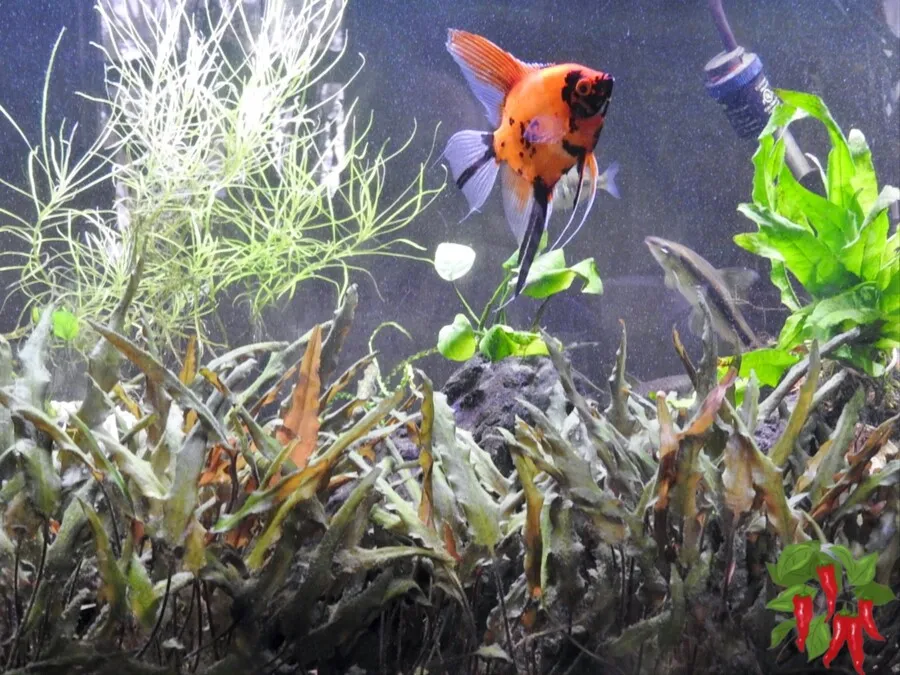
Getting into planted tanks can feel like a big step, but with the 75 gallon planted tank, it’s more of a leap forward.
This size offers flexibility, beauty, and a forgiving learning curve. Whether you’re into aquascaping or just want happy, healthy fish, this setup delivers.
📌 Recap of Key Topics
🌱 Benefits of a 75-Gallon Planted Tank
- Great for aquascaping and plant growth
- More room (48″ x 18″ x 21″) means more stable water conditions
- Supports a balanced ecosystem with fish and plants
🛠️ What You Need to Start
- Full-spectrum LED lights
- Nutrient-rich substrate
- Quality filter and heater
- Live plants (low to high light, depending on setup)
💁♂️ Starter Tips
- Start with Eco-Complete and low-maintenance plants
- Use sponge filters and a simple light like Finnex
- CO₂ isn’t required, but cycling is
- More water volume = more stability
- Plant now, add fish after the tank cycles
🐠 Bonus: Add Fish for a Complete Ecosystem
- Choose peaceful species that enjoy planted environments
- Consider cleanup crew like shrimp or snails
- Don’t overstock—balance is key
✅ Key Takeaways
- A 75 gallon tank offers plenty of room for creativity.
- Stable conditions make it easier for plants and fish to thrive.
- You don’t need CO₂, but it helps plants grow faster.
- This setup looks amazing and supports a full ecosystem.
- It’s a great choice whether you’re new or experienced.
Planted Aquariums: A Beginner’s Guide to Success
Visit my Amazon Influencer Page for videos and gardening products Grow Your Own Garden

